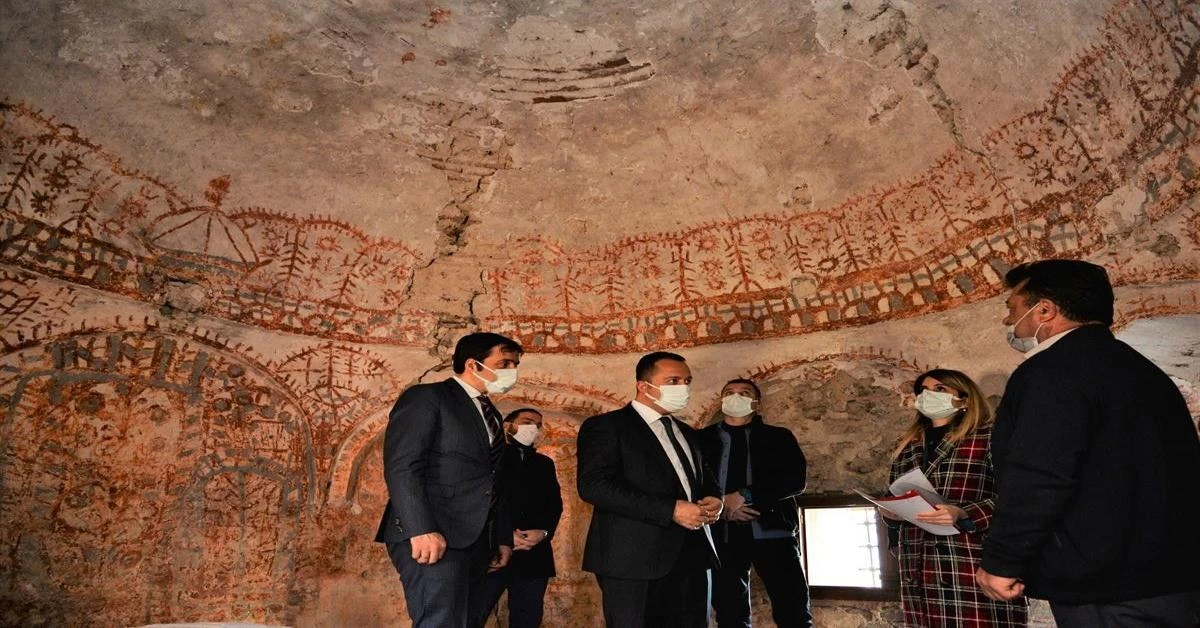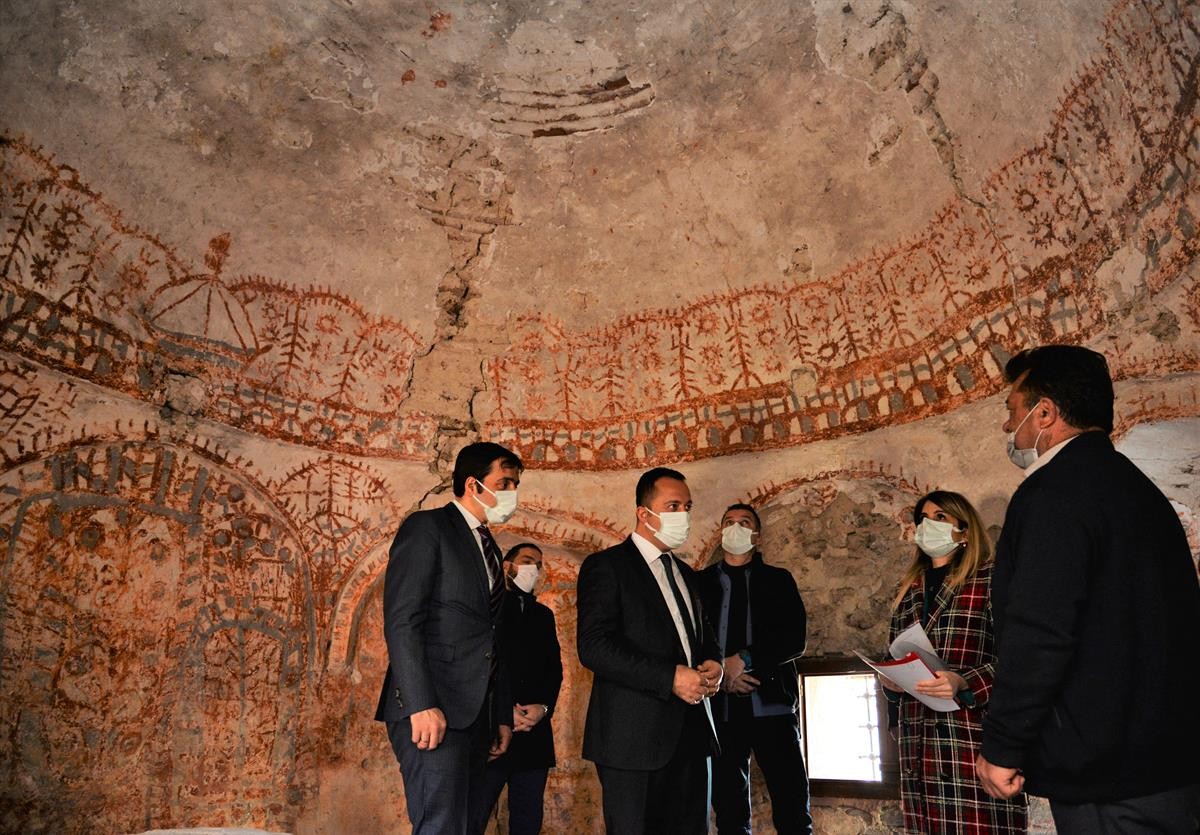Researchers discover 18th-century Shamanic drawings at Tomb of Isa Sofi

Shamanic drawings discovered in the mausoleum built in Bilecik, Türkiye in the name of the Ottoman end boss Isa Sofi have been dated to the 18th or 19th century
In Bilecik, Türkiye, the Tomb of Isa Sofi in Borcak village recently underwent renovations. Decorations hidden beneath layers of plaster were revealed during the process and remain well-preserved. These wall paintings depict the belief in the Sky God, offering a unique window into this early religious concept.
Historical documents confirm that Isa Sofi, for whom a mausoleum was built, possessed a zawiyah (religious lodge) here during the reign of Osman Bey, suggesting his prominent role in the community. A popular rumor persists that he was Ertugrul Gazi’s comrade-in-arms.

The very name Isa Sofi suggests that he was a religious figure and a prominent community leader. The construction of a mausoleum in his honor further underscores his significance. However, the non-Islamic elements in the tomb provide clues about the community he led and the possible blending of religious beliefs that existed at the time.
It does not resemble tombs in Anatolia
While the tomb reflects Early Ottoman architecture in its design, the story takes a fascinating turn when we look inside. Recent restoration efforts, following damage by treasure hunters in 2016, revealed stunning decorations beneath layers of plaster. These decorations are unlike any other tomb in Anatolia, and even its contemporaries.

The pencil-like decorations in the mausoleum are completely different from the floral and geometric motifs used in contemporaries, which originate from the belief in the Sky God. There are mostly red and gray ornaments on all the walls of the tomb and on the dome skirts. The ornaments depict the Turkish narrative of the universe, the ascension of the shaman, and the tree of life with shamanic motifs.
Among the ornaments, one of the two ship motifs is thought to take the soul of the deceased to Ulgen on the 16th level of the sky, while the other shows the place where 17 seas meet. Both are thought to be rituals associated with death. The decorations on the dome pulley, divided into horizontal and vertical sections, belong to the shamanic system of thought and depict the nature of the universe in general: the earth, humans, and the underworld.

The sun motif and the lightning motif, which are frequently depicted, represent the gods of Turkish mythology. Among the animal motifs, the stylized bird figure is thought to be a spirit bird named “Bucu” or “Koarı” used by the Gold Shaman during his journey to the other world.
When were shamanic images painted?
There are two different claims about the date of construction of these decorations. The first one is that Isa Sofi, one of Osman Gazi’s commanders, who contributed to the founding stages of the Ottoman Empire, came from outside Anatolia and settled in Borcak village, and the people he brought with him may have engraved these motifs on the tomb under the influence of the Central Asian tradition of Shamanism. The second claim is that the motifs may have been created in the early 20th century by a person or persons living in the nearby region.
According to a July 2023 paper, researchers took samples of plaster from the tomb of Isa Sofi that had been scraped and found to contain the motifs. Based on a sample of animal hair in the plaster sample, radiocarbon (C-14) analysis was used to analyze the construction date of the decorations.

The analysis showed that the sample’s exact date range was between 1,672 and 1,944 A.D. More specifically, the sample dates to around 1846 A.D. with a probability of 40.9% and to around 1725 A.D. with a probability of 36.5%.
“In order to determine the date of construction of the decorations, radiocarbon age determination analysis of the animal-derived hair in the plaster sample was performed, and it appears that the plaster layer with the decorations can be dated to the 18th or 19th century,” the researchers wrote in their article.
Various rituals practiced until 1980s
In addition to the importance of the mausoleum in ancient times, Isa Sofi continued to play an important role in the social and religious life of the village until recently. In addition to being a place visited by the people at regular intervals, celebrations such as Hıdrellez were also held here until recently, prayers were made here, and healing pilaf was cooked and eaten here.
The childless and the sick would visit, seeking cures for their ailments through prayer. A unique ritual involved placing deer bones on the grave while offering supplications. Legend also speaks of a practice where people would insert their hand into a cist within the tomb, believing that plucking a piece of plant inside signified answered prayers. This custom, however, is said to have ended abruptly when a visitor claimed Isa Sofi grasped their hand in return!
As in many other tombs in the region, the custom of lighting candles continued until recently. Similarly, the belief that water is left in the tomb every evening and that Isa Sofi performs ablution with it was also kept alive until recently.
Another ritual practiced until recent times involved tying pieces of cloth to branches of trees in the garden surrounding the tomb to make wishes.
Source: Newsroom



